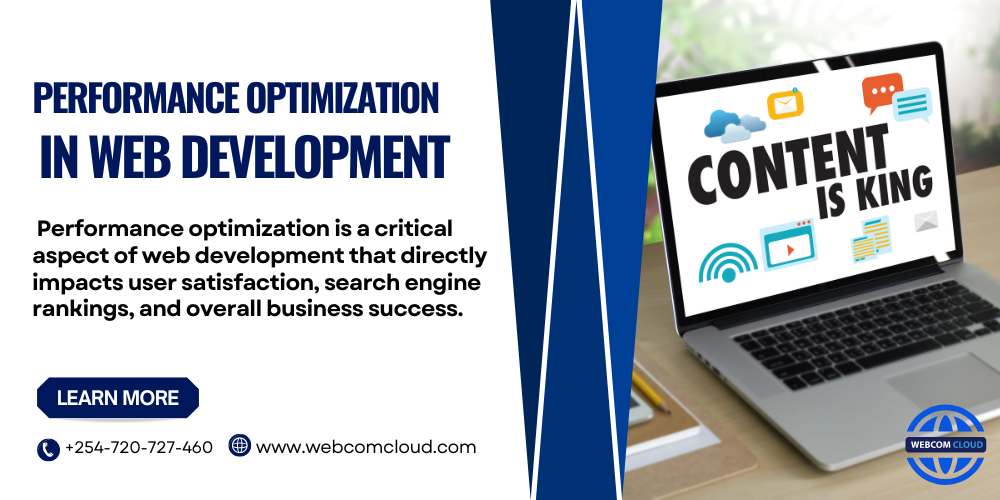A Guide to Performance Optimization in Web Development
Maximizing Efficiency: A Guide to Performance Optimization in Web Development
In today’s fast-paced digital world, users demand websites that load quickly and provide seamless experiences. Performance optimization is a critical aspect of web development that directly impacts user satisfaction, search engine rankings, and overall business success. In this article, we will explore the importance of performance optimization and delve into some practical strategies to ensure your website delivers a lightning-fast and efficient user experience.
Why Performance Optimization Matters
- User Experience: Studies show that users abandon websites that take too long to load, leading to higher bounce rates and decreased engagement. By optimizing performance, you enhance the user experience, ensuring visitors stay longer, interact more, and are more likely to convert.
- Search Engine Rankings: Search engines like Google consider page load times as a ranking factor. A faster website will rank higher in search results, driving more organic traffic to your site.
- Conversion Rates: Improved performance directly impacts conversion rates. Faster websites encourage visitors to complete desired actions, such as making a purchase, signing up for a newsletter, or filling out a form.
Performance Optimization Strategies
- Optimize Image Assets: Compress and resize images without sacrificing quality. Use modern image formats like WebP and lazy loading techniques to load images only when they come into the viewport.
- Minimize HTTP Requests: Reduce the number of HTTP requests by combining CSS and JavaScript files and utilizing CSS sprites for icons and images.
- Browser Caching: Leverage browser caching to store static resources locally on a user’s device. This ensures faster loading times for returning visitors as the browser doesn’t need to download the same resources again.
- Content Delivery Network (CDN): Implement a CDN to distribute your website’s static resources across multiple servers worldwide. This reduces latency and enhances the loading speed for users in various geographical locations.
- Code Optimization: Write clean and efficient code to reduce server processing time. Remove unused code, comments, and formatting before deploying to production.
- Asynchronous Loading: Load non-essential scripts asynchronously to prevent them from blocking the rendering of critical content on the page.
- Gzip Compression: Enable Gzip compression on the server to reduce the size of your website’s files during transmission, significantly improving load times.
- Minify CSS and JavaScript: Minification removes unnecessary characters from code, such as white spaces and comments, reducing file sizes and improving loading speeds.
- Server Response Time: Optimize your server’s response time by upgrading hardware, employing caching mechanisms, and minimizing database queries.
- Mobile Optimization: Prioritize mobile performance by using responsive design, mobile-specific optimizations, and AMP (Accelerated Mobile Pages) for content-heavy pages.
Performance optimization is not a one-time task but an ongoing effort to provide the best possible experience to your website’s visitors. By implementing the strategies mentioned above, you can significantly improve your website’s loading times, reduce bounce rates, and enhance user satisfaction. Remember that every millisecond counts, and even small improvements can have a substantial impact on your website’s success. Stay up-to-date with the latest technologies and best practices to ensure your website remains fast, efficient, and competitive in the ever-evolving digital landscape. For web design and development click the link: Web design and development
For more updates and insights, follow us on Twitter @webcomcloud.

